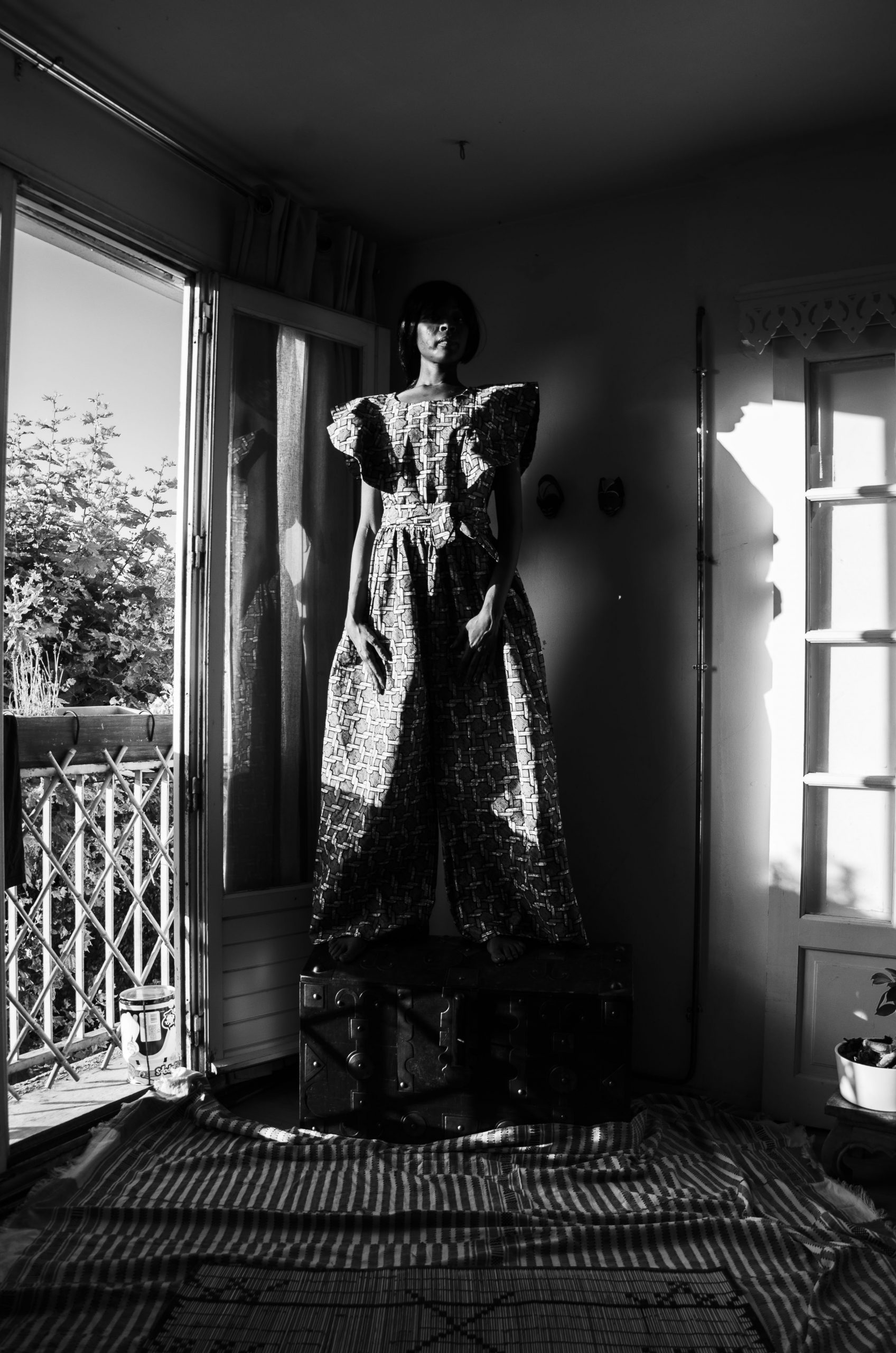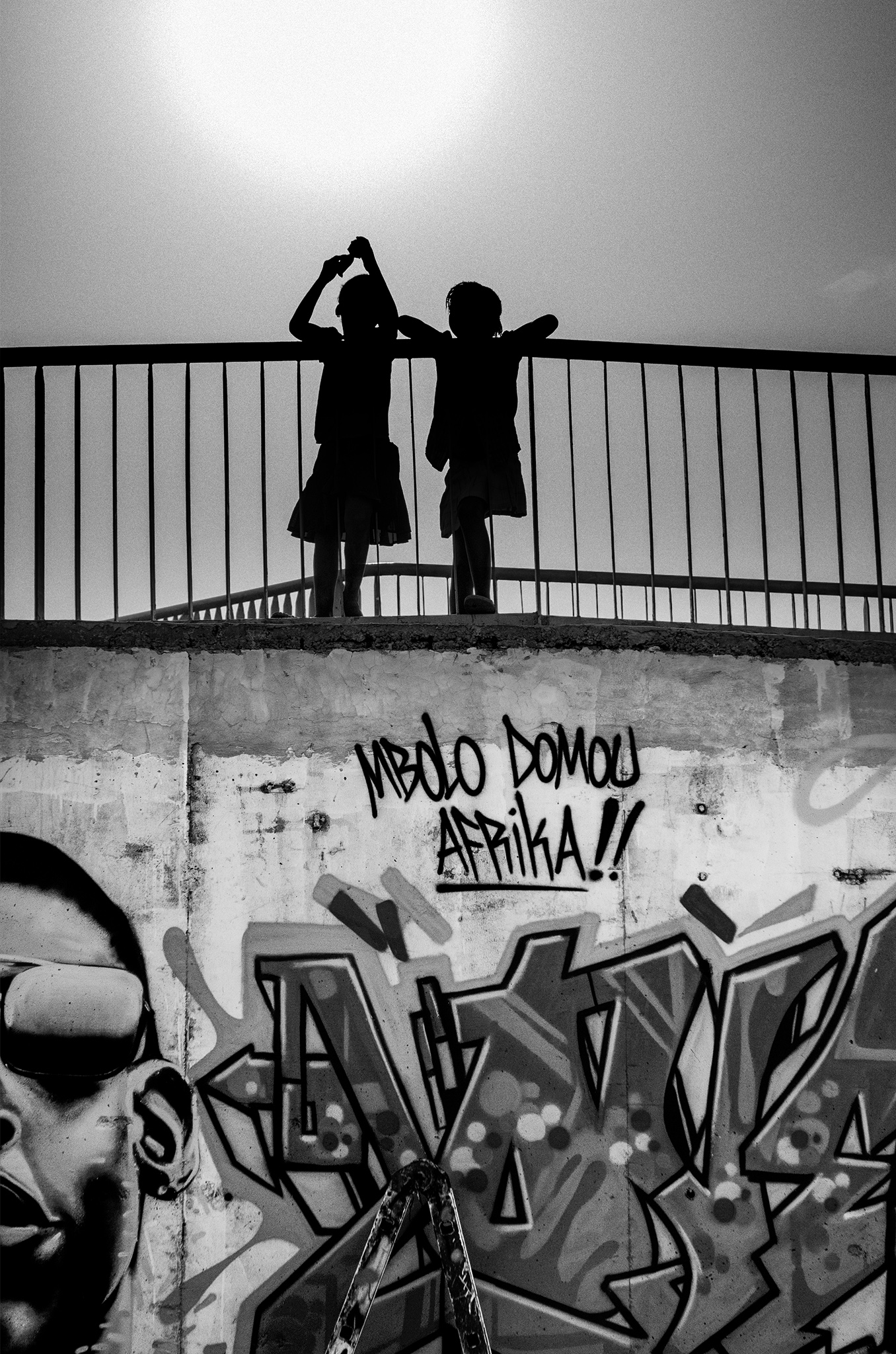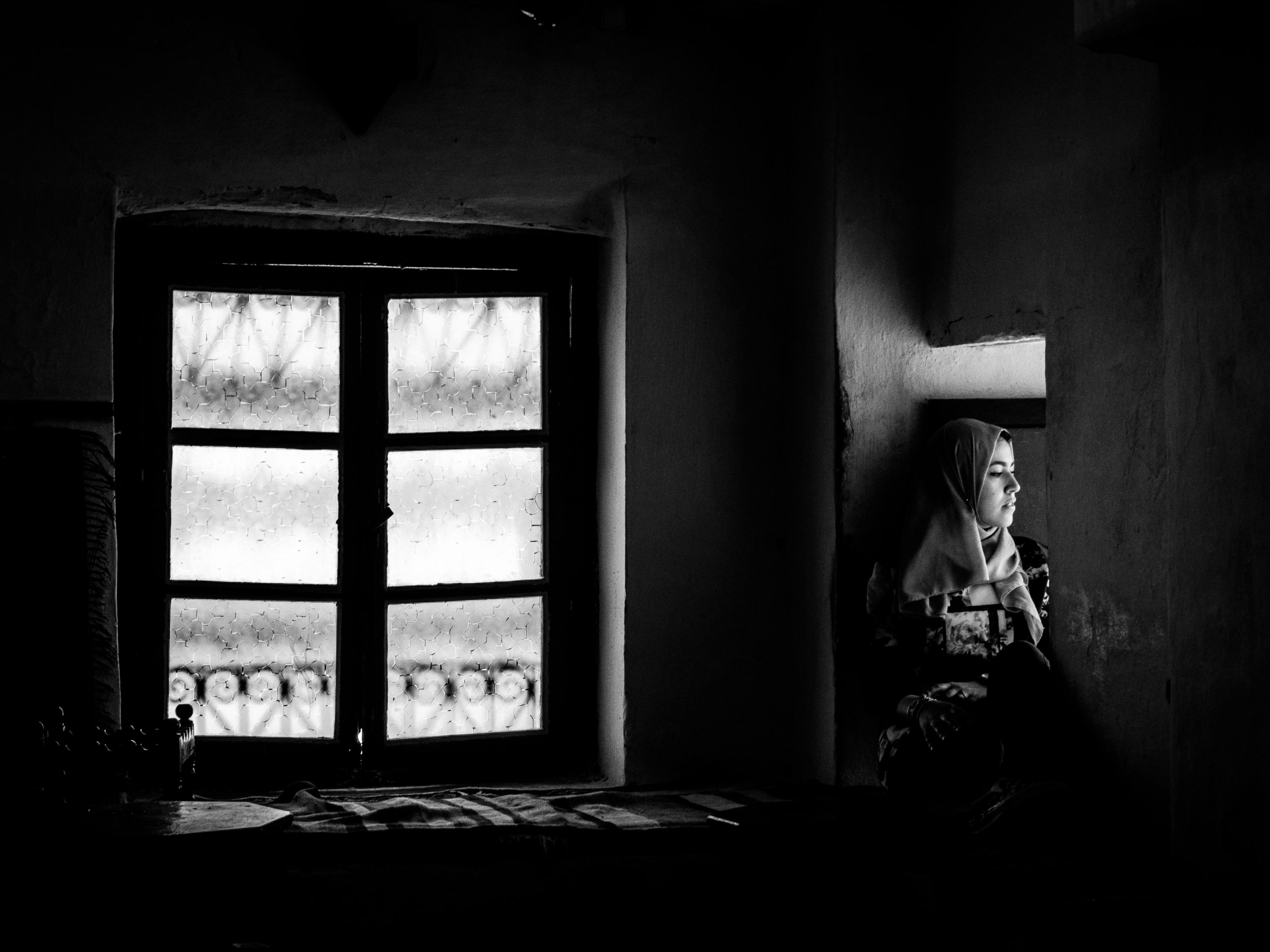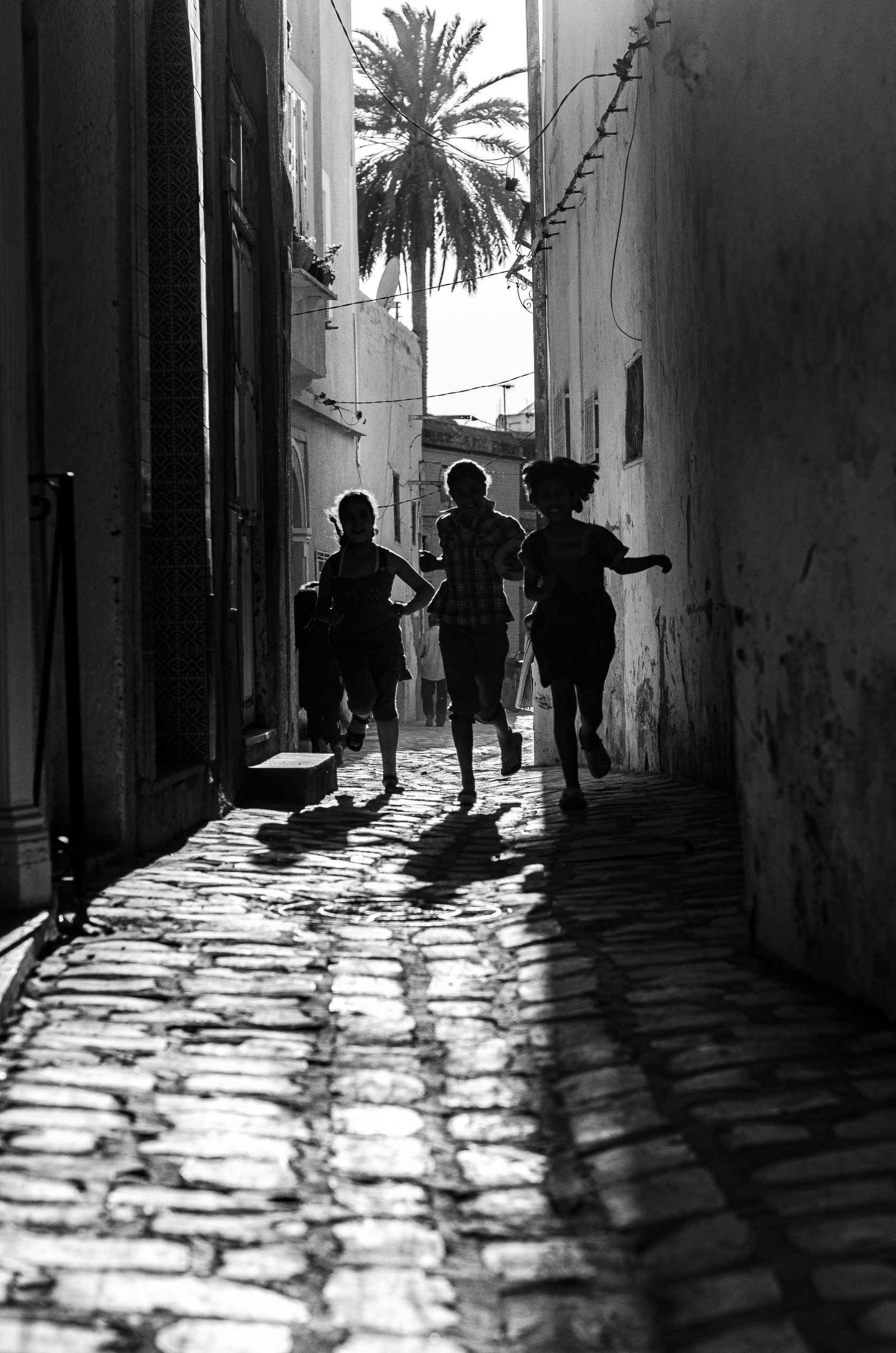Looking beyond the subjects, Michelle Angwenyi examines the effects of light, shadow, and time in the photos of Mauritanian-born photographer Malika Diagana. Through her handling of these elements, Angwenyi writes: “Diagana’s photography could make geographers of us”.

In any of Malika Diagana’s photographs, there is a striking mastery of light. She works just as well with light as with shadow, understanding its shifting technicalities, the powdery ligaments of what it obscures. Diagana sculpts shadow fearlessly, whether in its appearance as sharp line, as soft edge, as a silhouette—or even as all three. If light exposes an object, her photography seems to say, shadow exposes it even more. Take for example, the corners in which Diagana’s subjects are found. As demonstrated by them, the idea of dimension is visualized best at intersections, at vertices. It is in these very corners that Diagana’s photography grapples with shadow, with travelling light—in essence, with time. There is no better place where the sense of time is released most acutely as when you can see the light move. In these shielded locations, whether at the corner of the photograph itself, or in the place where two walls meet, what she captures is not the subject that moves, but the light, and the shadows that bear witness to this.
At the same time, within those corners, it seems that the figures being partially obscured by shadow are consequently obscured from time. It is that tension between simultaneously being at the centre of time and being outside it that lies beneath Diagana’s photograph in which someone in a long, patterned dress stands atop a squat platform. At first, it is easy to confuse them for a mannequin because of their stiffness—or perhaps because of the implausibility of their stance in what must be an uncomfortable corner and how it seems they’ve held still for an inordinate amount of time, much longer than what should be enough for a photo to be taken. It is not just the unusualness of their pose, but the surprising light and shadow that skitter softly over their dress that lends an immaterial texture to the photograph, a texture that takes on different forms throughout her work.
Diagana’s photography could make geographers of us, asking after compass points and aspect; longitudes, latitudes and the sharpness of shadow, or it could create an entirely new geography, one that asks that we allow for the corners to hold much more than intersecting lines. In Diagana’s photographs, we become even more aware of the supporting structures that hold us suspended within this new geography—windows, graffiti, textiles, patterns—and we realize that what seemed to be the converging point for our view—the subject within a corner—like an illusion of dimension, is now the starting site for travel through this new world.

Photography offers us quick ways to travel; we are taken to different times and places, but also, we are able to experience the world within photographs from perspectives we might not have considered before. There are different geographies to explore within photographs; they intersect with each other at any number of angles, reflecting an endless multitude of images back. In one of Diagana’s photographs, there are clothes pegged on a line, fresh and hanging bright in the sun. In the background is a chalky building, one that seems as though it had been lifted from a history textbook describing the ruins of some ancient African kingdom or other. Creeping along the bottom edge of the photo, there is a tree’s shadow that forms a trellis over the packed earth. What lends this photo an additional dimension is the presence of the woman pinning clothes to the line, how she seems to emerge from the shadows, slowly lift from the photograph and bubble onto the surface. And this woman, in that delayed, inconspicuous emanation, brings to mind a sublime sense of time and space. That is the power of Diagana’s photography: how it allows for the imagery to stretch and grow around you, how it re-describes time through several slow emergences of features that surprise and overlap to gently present a world of time to you, one that has several delightful nooks in which to wander and spend the day.

Travel begins with a preparation to encounter the unknown. This preparation is part of the journey. And when we make this journey through photographs, we arm our imagination with a kind of scaffolding, with an ever-morphing frame that supports the subsequently irregular shapes of expectation. In one of Diagana’s photographs, there is a compelling silence that allows for imagination to take root in a spacious playground, one that gives hints and signs at the geography, but leaving enough room for the observer to create any kind of pattern between them. In this photo, a person in a hijab sits in a corner by a window, soft shadows folding around her. We do not see what it is she is looking at outside, but we are able to begin to imagine what it could be. The soft materialization of the other shadowy elements of the photograph is the playground that assists our imagining; here, the grilles by another window, a folded fabric beneath it, the internal architecture of the building, the carved backs of what appear to be chairs. One can already begin to imagine any number of places this scene could have been captured in, but what happens outside it is anyone’s guess–but we have already been led there, and from the gentle exposure and delayed gratification of the photograph, a different kind of imagining emerges, one that is hungry to know more, yet also patient and thoughtful.

Again, it seems like a magic trick: how Diagana can so deftly circumnavigate the precise, constricting effect of the artificial structures in two photos— a bridge and a concrete platform in one, walls and pavements in another—to draw us to the shadowy figures of children in their centre, and into the geography of the photograph. Despite the heavy silhouettes, these children appear to be feather-light, leading us, like silent benevolent guides into the picture. In one, two children are drawing us up to the bridge, stretching us taller as we reach into the sun. In the other, three children run over cobblestones; they seem to mischievously show off that they can face both directions at once, running deeper into the distance and at the same time, out of it, right out into our world.
Michelle K. Angwenyi is a writer from Nairobi, Kenya. In 2018, she was shortlisted for the Brunel Africa International Poetry Prize.




